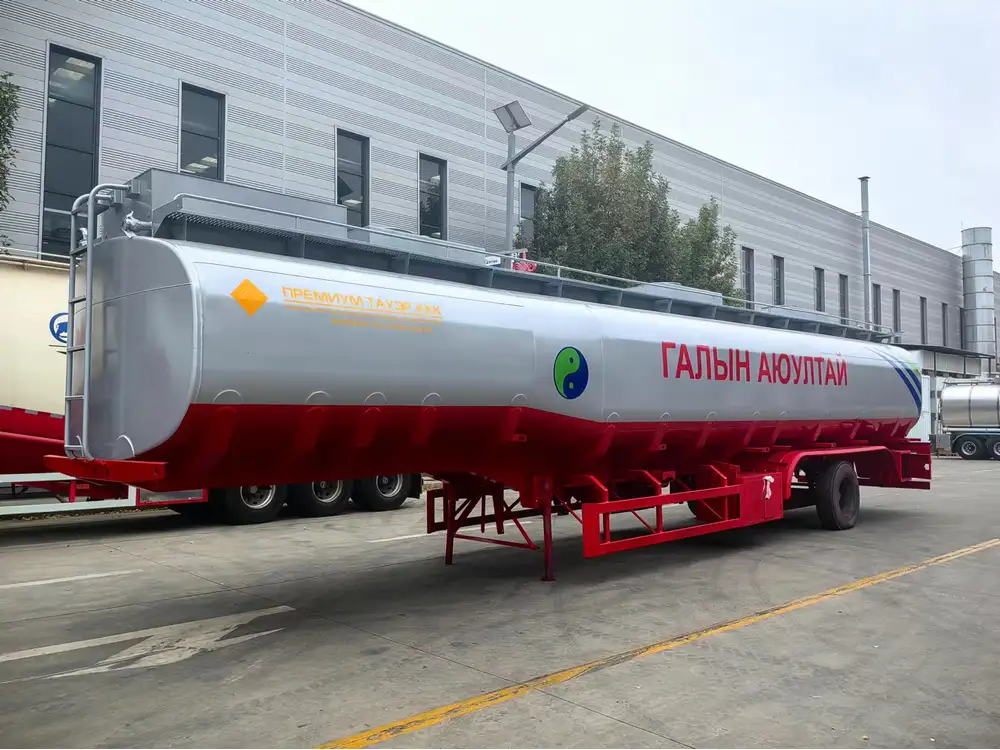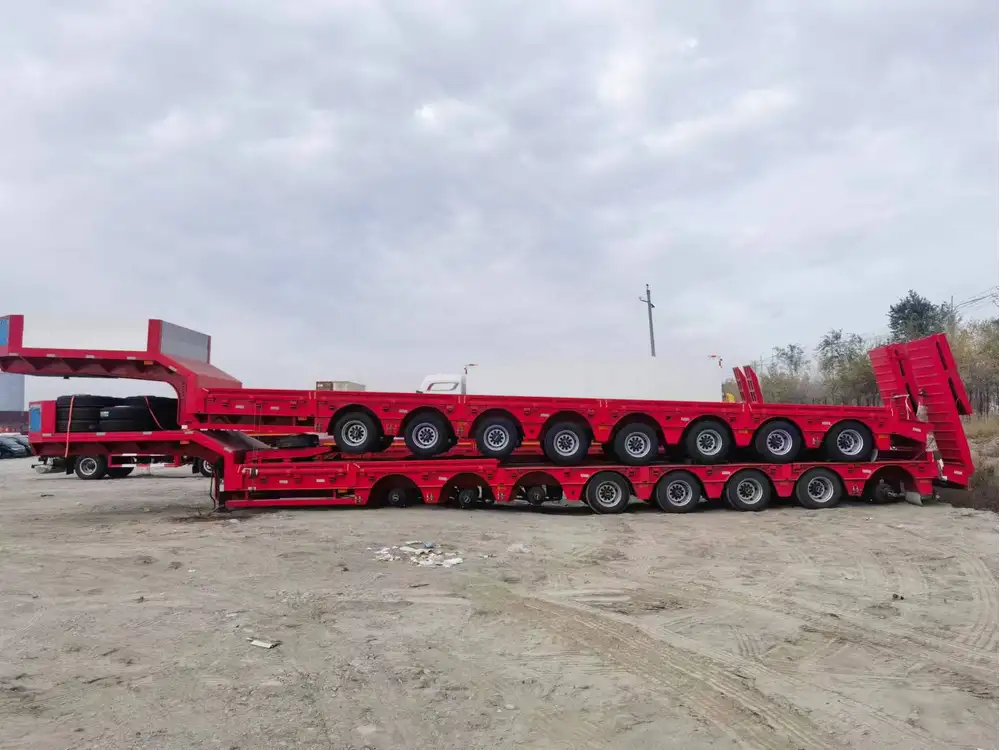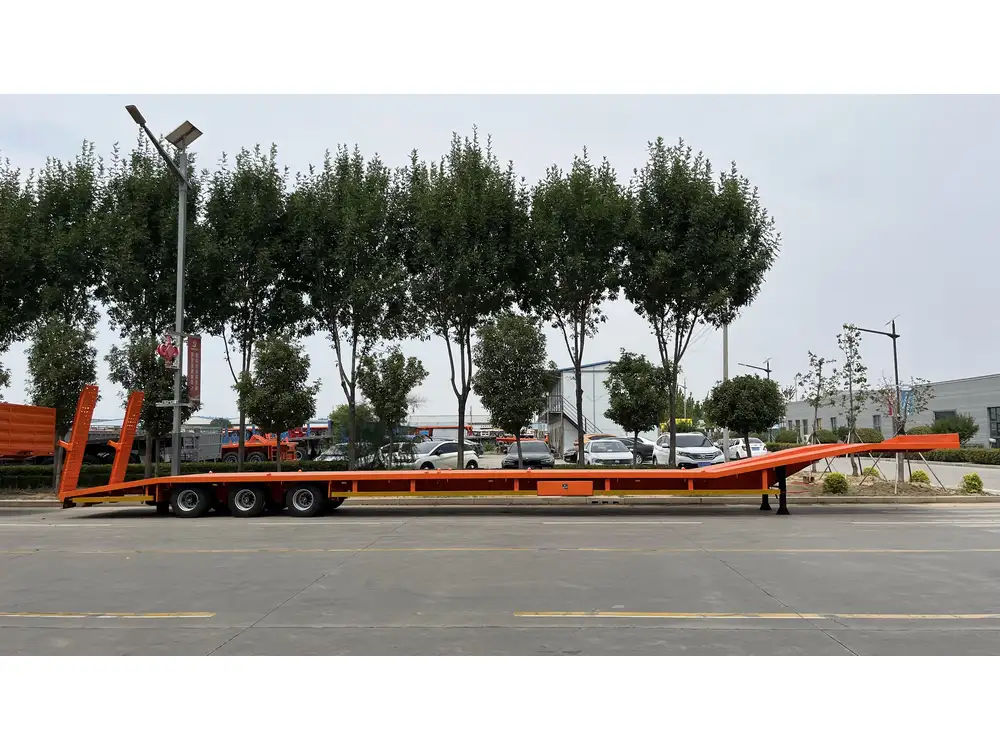In a landscape where logistics and transportation are the lifelines of commerce, understanding the specifications of semi-trailers, particularly their width, is crucial for manufacturers, fleet managers, and logistics providers. This comprehensive guide aims to dissect the dimensions and regulations surrounding the width of semi-trailers, ensuring you make informed decisions that align with industry standards.
The Fundamentals of Trailer Width
The width of a semi-trailer plays a pivotal role in not only the efficiency of loading and transporting goods but also in compliance with legal regulations. Standard semi-trailers typically conform to specific width measurements that facilitate a balance between capacity and road safety.
Standard Width Specifications
The Federal Motor Carrier Safety Administration (FMCSA) mandates certain specifications regarding the width of semi-trailers. In general, the standard width for a semi-trailer in the United States is 8.5 feet, which is equivalent to 102 inches. This measurement is crucial as it directly impacts:
- Load Capacity: A wider trailer can accommodate more cargo.
- Stability: Proper width ensures better stability on the road.
- Compliance: Adhering to width regulations helps avoid fines and operational issues.
| Type of Trailer | Width (feet) | Width (inches) |
|---|---|---|
| Standard Flatbed | 8.5 | 102 |
| Refrigerated Trailers | 8.5 | 102 |
| Dry Van Trailers | 8.5 | 102 |
| Specialized Trailers | 8.5-10.0 | 102-120 |

Variances in Trailer Width
Although the standard width remains largely uniform at 8.5 feet, certain specialized trailers may deviate from this norm. For example, when transporting oversized cargo, width can range from 8.5 to 10.0 feet (102 to 120 inches). It’s essential to consider these variations based on operational requirements and state regulations.
Factors Influencing Trailer Width
Several factors come into play that can influence the choice of trailer width, which include:
1. Cargo Type
Different types of goods require specific trailer widths. For instance:
- Freight and Pallets: Standard dimensions work well for general freight.
- Heavy Equipment or Machinery: May necessitate wider trailers to accommodate bulky items.

2. Regulatory Considerations
Each state has its regulations regarding maximum allowable dimensions for vehicles on public roads. It is crucial to consult local transportation departments to ensure compliance with width laws.
3. Trailer Configuration
The design layout of the trailer (e.g., flatbed, refrigerated, or dry van) often dictates the optimal width based on its intended use.
| Trailer Type | Common Use | Typical Width |
|---|---|---|
| Flatbed | Hauling heavy machinery | 8.5 ft (102 in) |
| Refrigerated | Transporting perishable goods | 8.5 ft (102 in) |
| Dry Van | General freight transportation | 8.5 ft (102 in) |
| Step Deck | Over-height cargo transport | 8.5-10 ft (102-120 in) |
The Importance of Understanding Width Regulations
Understanding the legal width limits not only helps in preventing infractions but is also critical for optimizing load calculations and maintaining safe driving conditions.

Legal Width Limits
In jurisdictions like the U.S., the Interstate Highway System enforces a maximum width of 102 inches for most vehicles. However, exceptions exist for specific applications:
- Oversize Load Permits: For trailers exceeding standard width, procuring special permits is necessary.
| Width (inches) | Permitting Requirement | Examples |
|---|---|---|
| 102 | No permit needed | Standard loads |
| 108 | State-level permits often required | Machinery, specialized loads |
| 120 | Special transport permits required | Oversized equipment |
Safety Concerns Related to Trailer Width
As width impacts load distribution and aerodynamics, ensuring that trailers adhere to legal specifications mitigates risks associated with road safety. Here are some critical safety considerations:
1. Stability and Control
The wider the trailer, the more stable it is; however, exceeding safe width can lead to handling difficulties and increased rollover risks especially in adverse weather conditions.

2. Maneuverability
Wider trailers may restrict the ability to navigate through narrow passageways or turns, making route planning essential.
3. Road Wear and Teardown
Wider trailers can exert more pressure on road infrastructure, leading to additional maintenance costs for municipalities.
How Width Affects Load Planning

Load Distribution
Proper weight distribution on a semi-trailer is fundamentally linked to its width. Load planning must consider:
- Center of Gravity Quirks: A wider trailer can distribute weight across a broader area, enhancing stability.
- Max Weight Limits: Different widths impact how much cargo can be safely transported without exceeding weight limits per axle.
Trailer Load Types
- Uniform Loads: Cargo evenly distributed across a trailer’s width.
- Non-Uniform Loads: Cargo that may create imbalances, where width becomes a critical factor for stability.
The Future of Semi-Trailer Width
With innovations in logistics and the growing trend of e-commerce, the demand for specialized semi-trailers capable of accommodating varied cargo sizes is expected to rise.

Emerging Technologies
Advancements in technology, such as dynamic loading systems and automated weight sensors, promise to enhance how width and load capacities are monitored and managed. This could push the industry towards more efficient, adaptable trailer designs that conform to diverse operational needs.
eco-Friendly Trends
In line with sustainable logistics practices, the emphasis on maximizing space while minimizing emissions may influence future semi-trailer designs. The integration of eco-friendly materials in trailer manufacturing will likely become more common, impacting trailer widths and configurations to enhance efficiency.
Conclusion: Making Informed Decisions
As we navigate the complexities of semi-trailer specifications, understanding standard widths is fundamental to optimizing logistics operations. Manufacturers, fleet managers, and logistics service providers must remain cognizant not only of regulatory standards but also the demands of their unique operational environments.

Key Takeaways
- Standard Width: The standard width of 8.5 feet (102 inches) is central to trailer design and usability.
- Variations: Specialized trailers may require broader specifications, necessitating careful planning regarding compliance and safety.
- Future Directions: Embracing technological advancements will shape the landscape of trailer design and functionality.
By leveraging this knowledge, stakeholders can ensure efficient transport solutions that are legally compliant and safety-focused, driving better business outcomes in an increasingly competitive marketplace.



